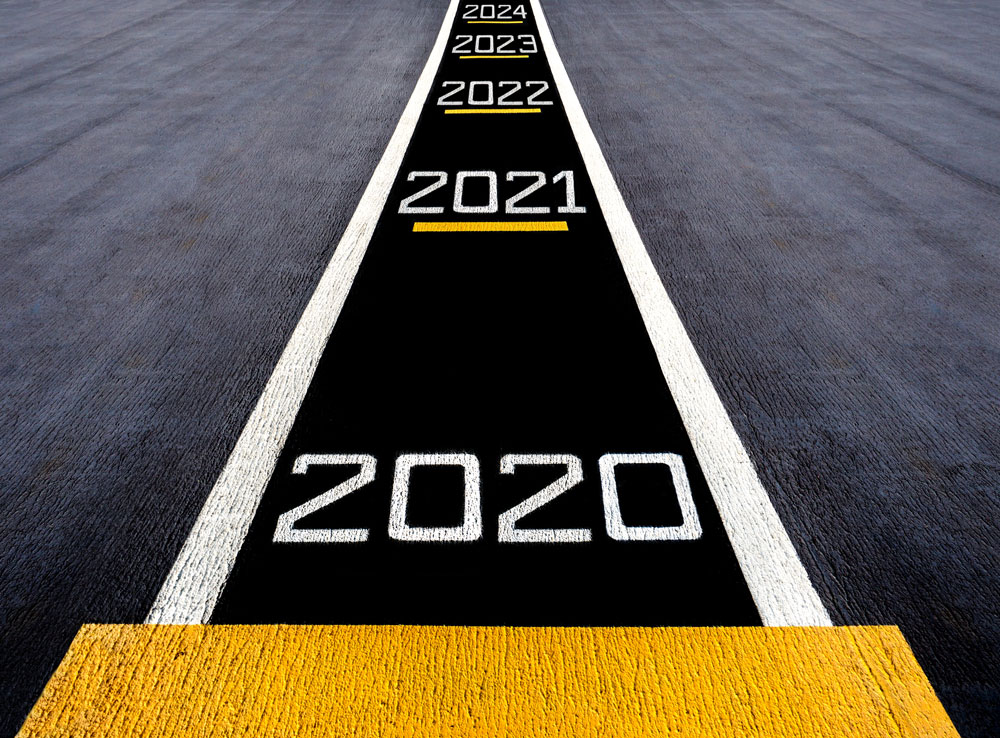
If there is one safe bet about the year ahead, it’s that 2021 will be nothing like 2020. Perhaps most importantly, the global economy is likely to grow rather than shrink as it did in the thick of the COVID-19 pandemic. And a vaccine for the virus is likely to become widely available by the second half of the year, experts suggest.
Nonetheless, the massive disruption of the last 12 months will leave a mark on the next 12. Economic growth will be uneven and consumer habits forged in the crucible of COVID-19 will persist, according to panelists speaking at the Flexible Packaging Association’s 2020 Virtual Fall Executive Conference.
The flexible packaging industry kept operating through the pandemic as a supplier to businesses delivering food, medicine, and other essentials. But the industry adapted to dramatic swings in consumer habits as lockdown orders kept many people working—and eating—at home. Ecommerce soared as a result.
Other trends evident before the pandemic will continue to play out as well, such as the rise in single-person households and the growing sway of China in international markets, the experts say. Sustainability will remain a priority as governments and consumer brands race to meet ambitious environmental goals over the next few years.
And until effective vaccines and treatments are widely available, the virus could continue to spur temporary shutdowns and other containment efforts through at least the first half of 2021.
The bottom line for the flexible packaging industry: “The economic impact from the COVID-19 crisis will be with us until well into next year, but there are opportunities in all this,” says Anja Manuel, a former U.S. diplomat and partner at Rice, Hadley, Gates, & Manuel LLC, an international strategic consulting firm with offices in Silicon Valley and Washington, D.C. The firm’s partners include former Secretary of State Condoleezza Rice and former Secretary of Defense Robert Gates.
The chief opportunity lies in the relatively high growth rates projected for much of the world. The forecast globally is growth of 5.8% in 2021 after shrinking about 3% in 2020, Manuel says, though the recovery will vary by country and region.
She described two trends. One follows that the recovery will differ by region, with Asia’s economies bouncing back faster and with high growth rates, while Latin America will likely struggle. The second trend surmises that within many countries there will be a “K-shaped recovery,” a term first coined by Larry Summers, a former U.S. Treasury secretary. The letter describes a recovery in which some sectors grow—such as technology—while others, especially those already under stress—retail, hospitality, some manufacturing—struggle to bounce back.
“The economic impact from the COVID-19 crisis will be with us until well into next year, but there are opportunities in all this.”
—Anja Manuel, a former U.S. diplomat and a partner at Rice, Hadley, Gates, & Manuel LLC
Analyzing World Markets
Regionally, the United States, Germany, China, and India are expected to grow this year, as are Asian countries such as South Korea and Taiwan, which quickly contained the virus and kept it at bay, Manuel says.
“Asia is the engine for the world economy,” she says. “That trend is going to continue.”
Also expected to continue is the contentious relationship between the U.S. and China, Manuel added.
The conflict is not solely a function of President Donald Trump’s approach over the last four years. It stems also from China’s displacement of the U.S. as a major trading partner in the world and its more aggressive stance toward its neighbors. Manuel cited the Asian giant’s recent confrontations with India, the Philippines, and Vietnam, for example.
The experts are planning for a varied future. Joe Biden likely will tone down the rhetoric and look to work with friends and allies to manage China’s rise, Manuel says. Biden, for example, has said he would renegotiate the Trans-Pacific Partnership, a trade deal that Trump rejected soon after his inauguration in 2017. The deal was seen as a way to counter China’s rise, but some critics feared it would harm U.S. workers by shifting jobs overseas.
“I think we’re going to have a fairly contentious relationship with China for the foreseeable future,” Manuel says. “And that means the tariffs probably won’t come off quite as quickly as some industries would like.”
Latin American countries, on the other hand, struggled to control COVID-19 and their economies will lag this year, she says. Heavy debt, meanwhile, has kept them from enacting strong economic stimulus packages. “This is going to be likely a pretty sluggish recovery,” Manuel says of the outlook for Latin America.
The recovery will be as uneven for people as it will be for countries, Manuel adds. People in jobs that could move to remote work have fared well, Manuel says. Others have not, and they could take a decade to make up what they have lost.

Tracking Raw Materials And Growth Patterns
The gyrations of the last year also have been felt in the market for polypropylene, a material used in a range of flexible packaging. While demand for polypropylene typically falls during a recession, it stayed relatively flat through 2020 due to COVID-induced buying patterns like the increased consumption of personal protective equipment, says Joel Morales, Jr., executive director of polyolefins for the Americas for research firm IHS Markit.
Producers had been adding capacity before the pandemic through building new plants and squeezing more products out of existing plants, Morales says. However, COVID-19 has created uncertainty about future projects, and they are likely to be delayed until there is a better balance between supply and demand.
As a result, he says, prices for polypropylene are bottoming out in 2021 and 2022.
Flexible packaging, though, will remain one of the fastest-growing packaging categories, according to figures presented by Devorah Kaufman, a business intelligence solutions account manager for Euromonitor International, a London-based market research firm that has partnered with the FPA for about five years.
Euromonitor is projecting annual growth of 3% for flexible packaging through 2024. The growth will vary by category, however. The biggest category—food packaging—is expected to expand about 2.25%, while the smallest—packaging for dog and cat food—could see growth of about 4%.
Regionally, Asia and Africa are expected to grow the most, Kaufman says. Asia accounted for 823 billion units of flexible packaging in 2019 and could rise 18% to 973 billion units by 2024. Africa is expected to grow 24%, rising from 56 billion units in 2019 to 70 billion units by 2024.
The product mix is changing, however, Kaufman says. During the pandemic, for example, consumers have turned to familiar brands and old favorites that remind them of pre-COVID times. Brands have responded by cutting back on innovation and pruning their product lines.
Squeezed economically, consumers also are searching for value, which is creating opportunities for less-expensive private-label products. On the downside, that trend has meant a decline in sales for products that rely on discretionary income, like luxury goods and personal accessories.
Package sizes, meanwhile, are heading in opposite directions. On the one hand, consumers are snapping up larger packages to stock up on essentials like toilet paper. On the other hand, smaller packages are finding favor with budget-conscious households and the growing number of people who live alone, Kaufman says.
Values also are driving consumer behavior, Kaufman says, who citespreferences for locally owned businesses and sustainable causes. “Sustainability is not going away,” she says.
Flexible packaging can be part of the solution, she says. But the category faces challenges in developing an infrastructure for recycling, especially for packages that incorporate multiple materials.
Alternative materials, such as paper, also will gain traction, Kaufman says. While it is harder to use—and affords less protection against things like grease and moisture—the material is gaining interest. For instance, Nestle’s YES! snack bars are wrapped in recyclable paper.
One question for 2021 is whether the ongoing demand for staple foods will compensate for the downturn in business from restaurants and institutional foodservice companies—and when that business will even come back.
Vaccines were developed at an unprecedented pace, Manuel says. But they probably will not be widely available in developed economies until next summer or fall at the earliest. “This is going to be with us for a while,” she says.
Joel Berg is a freelance writer and editor based in York, Pennsylvania.


